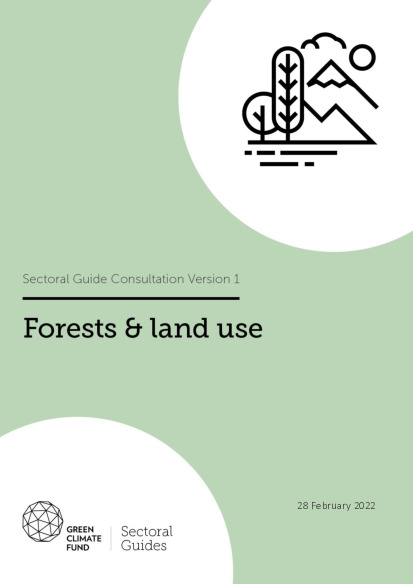Sectoral guide: Forests and land use
This sectoral guide provides guidance for forests and land use (FLU). As such, it is complementary to other sectoral guides, including the Sectoral Guide on Ecosystems and Ecosystem Services and the Sectoral Guide on Agriculture. Forest protection, conservation, and sustainable land management are central components of the Paris Agreement. Limiting global warming levels to 1.5°C above pre-industrial levels is not possible without protecting, restoring, and sustainably managing forests and land.
Challenges in this sector were already seen with the 1.1°C average global warming experienced through 2019 – increased droughts, floods and wildfires, and significant decreases in crop productivity. The Covid-19 pandemic highlights the need to align climate mitigation and resilience with health and development objectives in efficient, effective and equitable “green” circular economic transformation. Achieving the goals of the Paris Agreement relies strongly on ending forest destruction and enhancing forest and land sinks, although there are limitations to land-based mitigation that are discussed in this Guide.
The vision for a paradigm shift is centered around reducing emissions from forest loss and degradation; addressing the drivers of deforestation, notably in agriculture – and more broadly, implementing a cross-sectoral, landscape approach to reducing deforestation and forest degradation; increasing resilience of local people and forests against climate change through protecting and restoring natural and managed forest ecosystems and landscapes; focusing on the needs of the most vulnerable; and improving the livelihood of communities and forest-dependent people. This can be achieved along three paradigm shifting investment pathways: (1) protecting natural forests and landscapes, (2) restoring degraded forests and other landscapes, and (3) sustainable management of productive forest landscapes. To create an enabling environment in addressing key challenges, GCF can improve forest and sustainable land management through institutional capacity as well as deploying a range of financial instruments.
The sectoral guide draft was released for consultation between March 2021 and July 2021. The Secretariat received more than 400 suggestions and recommendations which are addressed in the current version of the guide. The sectoral guide will be submitted to the GCF Board for its consideration in 2022. In the meantime, GCF remains open to further feedback on this draft. For further inquiries please contact us via: sectoralguides@gcfund.org.
